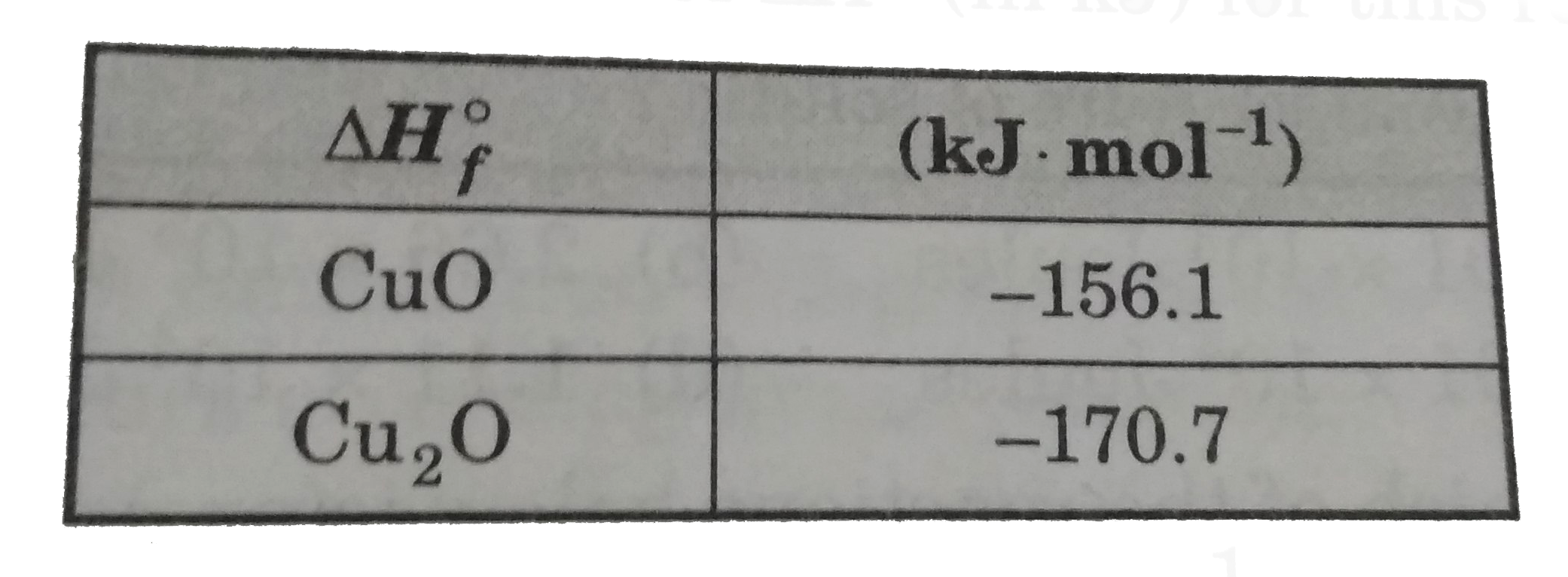Above what temperature the following reaction will be spontaneous? 2CuO(s)→Cu2O(s)+12O2(g). Given, ΔH=144.6kJandΔS=0.116kJ⋅K−1 for the process.Solution in Bengali
We know, ΔG=ΔH−TΔS. A reaction at a given temperature and pressure is spontaneous if ΔG<0 for the reaction. Therefore, at a given pressure and a temperature of TK, the reaction will be spontaneous if-
ΔG<0or,ΔH−TΔS<0 ∴TΔS>ΔHor,T>ΔHΔS
Given that, ΔH=144.6kJandΔS=0.116kJ⋅K−1
∴T>144.60.116or,T>1246.55K
So, the reaction will be spontaneous above 1246.55 K.
Topper's Solved these Questions
- CHEMICAL THERMODYNAMICSBOOK - CHHAYA PUBLICATIONCHAPTER - CHEMICAL THERMODYNAMICSEXERCISE - SOLVED NCERT EXERCISE
22 Videos
- CHEMICAL THERMODYNAMICSBOOK - CHHAYA PUBLICATIONCHAPTER - CHEMICAL THERMODYNAMICSEXERCISE - HIGHER ORDER THINKING SKILLS (HOTS) QUESTIONS
20 Videos
- CHEMICAL THERMODYNAMICSBOOK - CHHAYA PUBLICATIONCHAPTER - CHEMICAL THERMODYNAMICSEXERCISE - QUESTION ANSWER ZONE FOR BOARD EXAMINATION (SHORT ANSWER TYPE)
35 Videos
- CHEMICAL KINETICSBOOK - CHHAYA PUBLICATIONCHAPTER - CHEMICAL KINETICSEXERCISE - EXERCISE (NUMERICAL PROBLEMS)
37 Videos
- CHEMISTRY IN EVERYDAY LIFE BOOK - CHHAYA PUBLICATIONCHAPTER - CHEMISTRY IN EVERYDAY LIFE EXERCISE - PRACTICE SET 15
15 Videos
Similar Questions
A thermodynamics state function is a quantity-
View SolutionThe results obtained by applying the mathematical form of the first law of thermodynamics for different process are given below. Identify the process (w=P-V work only): ΔU=0,q+w=0
View SolutionAccording to the definition of thermodynamic system, which system does living beings belong to, and why?
View Solution2A→4B+D , in this reaction, concentration of B increases to 2×10−3mol.L−1 after 10s from the start of the reaction . Calculate : rate of formation of B
View SolutionWhich will not enhance nutritional value of food-
View SolutionDeltaH and DeltaS for Br_(2)(l) +CI_(2)(g) rarr 2BrCI(g) are 29.00 kJ mol^(-1) and 100.0 J K^(-1) mol^(-1) respectively. Above what temperature will this reaction become spontaneous?
View SolutionPredict whether the following reaction is possible or not at 300k.
2CuO(s)→Cu2O(s)+1/2O2(g)
ΔH=−144.6kJmol−1,ΔS=0.116kJmol−1
View SolutionAt what temperature the following process would not be spontanous ?
4Fe(s)+3O2(g)→2Fe2O3(s)
ΔH=−1648kJ/mole
ΔS=−560J/mole
View SolutionWhat is the value of ΔH∘ (inKJ) for this reaction ?ltbr gt

2CuO(s)→CuO(s)+12O2(g)
View SolutionGiven chemical equations for these reactions
S(s)+O2(g)→SO2(g)ΔH=−29608KJ×mol−1
H2(g)+12O2(g)→H2O(l)Δ=−285.8KJ×mol−1
H2(g)+S(s)→H2S(g)ΔH=−20.6Kj×mol−1
What is the value of ΔH for the reaction below?
2H2s(g)+3O2(g)→2H2O(l)+2SO2(g)
View SolutionFor the reaction 2Ag_(2)O(s) rarr 4Ag(s) + O_(2)(g), DeltaH is 61.17 KJ"mol"^(-1) and DeltaS is 132 JK^(-1) "mol"^(-1) . Compute the temperature above which the given reaction will be spontaneous.
View SolutionFor the reaction, CaCO3(s)→CaO(s)+CO2(g),ΔH0=+179.1kJ⋅mol−1 and ΔS0=160.2J⋅K−1. If ΔH0andΔS0 are temperature independent, then temperature above which the reaction will be spontaneous is equal to-
View SolutionThe Delta H and Delta S " for " 2 Ag_(2)O (s) rarr 4Ag(s) + O_(2) (g) are given + 61.18 kJ mol^(-) and + 132 JK^(-1) mol^(-1) respectively. Above what temperature will be reaction be spontaneous?
View SolutionAssume ΔH∘ and ΔS∘ to be independent of temperature, at what temperature with the reaction given below becomes spontaneous?
N2(g)+O2(g)→2NO(g)
ΔH∘=180.8kJmol−1
View SolutionCalculate the temperature, at which the reaction given below is at equilibrium, Ag_(2)O(s) to 1/2 O_(2)(g) Given, DeltaH = 30.5 kJ mol^(-1) and DeltaS = 0.066 kJK^(-1)"mol"^(-1)
View Solution
